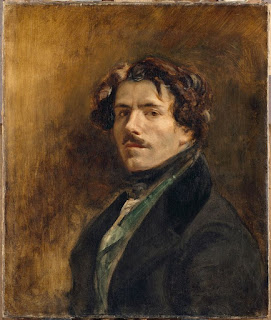Light and color, working in the open air
Light and color, working in the open air
In the technical development, the Impressionists especially noticed their treatment of contrast,
Color and Light in the open air.
 |
| Etretat - Pierre van Dijk / 60x70cm / oil on canvas |
Much attention was paid to the different shades in changing light and to the......
mutual relationships of the color values, which were often reproduced in complementary tones on a finely divided scale from light to dark.
Motives, shapes and outlines (lines) were subordinated to them. Moreover, the use of color became brighter and more intense, coinciding with an increase in color in the outside world: chemical processes had led to enormous growth in the availability of dyes.
This led to an increase in colorful clothes on the street, for example, but also to a greater availability of all kinds of pigments, often also new ones, such as chrome green.
Black was rarely used. The elementary colors were often applied wet-on-wet in loosely juxtaposed tests on canvas, so that they formed the desired color variations remotely and thus allowed a more subtle nuance.
Important here was no longer the material accuracy of the forms in nature, but rather the colorful solution of sun, light and air. ( Monet ) ( Pierre )
The ready-made availability of paint in tubes, after the invention by Geoffrey Rand in 1841, also promoted working 'en plein air', which was another aspect that typified the Impressionist painter.
Impressionists wanted to portray the 'perceived' directly as it was shown to them and as they experienced the impression themselves on the spot.
They were always found on the street or somewhere in the landscape, at least outside.
You want to know more ? Masterclass 2018 On location
Kind regards Pierre.



Comments
Post a Comment
Thank you for your response
Kind regards Pierre